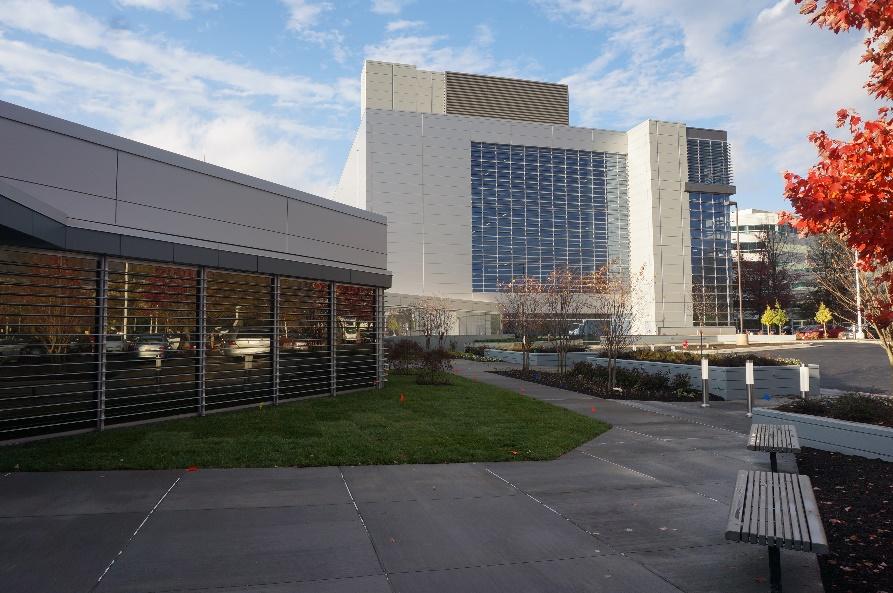
Tackling the Challenges of Public Sector Data Center Consolidation
In the IT world, the pace of expansion in all aspects of innovation, adoption and implementation sometimes feels as if it is only exceeded by the rate of expansion of the universe! We often think of this sort of explosive growth only in terms of private sector initiatives.

The fact is, the challenges presented by demands for increased data storage capacity, blazing network performance, security, 100% uptime, elastic scalability and compliance are as great or greater in the public sector.
In the past, meeting those challenges meant opening a data center where needed, when needed. Over time, the degree of data center sprawl has become fiscally unsustainable and begs for vigorous modernization and consolidation. In fact, there has been a federal data center consolidation initiative (FDDCI) underway since 2010, but agencies have struggled to meet targets set out in the FDDCI.
A 2019 Government Accountability Office analysis of Office of Management and Budget data reported that as of 2018 there were 12,166 federal government data centers running and that most were inefficient.1 While other estimates, based on differing definitions of what constitutes a data center, placed the number of federal data centers at 5,607 in 2016, they also showed that by 2018 that number had grown to 5,916.2 (FYI, these statistics are the most recent available and don’t include state- and local-level data centers.)
This level of growth makes sense when you consider that the user audience for the data and services provided by the public sector includes multiple instances of nearly the entire population of the United States, roughly 330 million people.
Data Center Consolidation Key to Achieving Public Sector IT Optimization
“Federal data center consolidation (DCOI) efforts have been underway since 2010 and OMB’s fiscal year 2018 targets provided clear and transparent goals that helped define the tangible benefits that DCOI was expected to provide. However, most agencies continue to report mixed progress against those targets.
Until agencies consolidate the data centers required to meet their targets, as well as identify and report the associated cost savings, they will be challenged to realize expected efficiencies and the full benefits of DCOI will not be fully realized.”3
Where Do You Begin Data Center Consolidation?
It’s quite common for a single agency to have dozens or hundreds of data center footprints (often simply a few servers in office-based data closets) in numerous sub-optimal environments, across multiple geographies.
In a recent conversation with a primary data center coordinator for one division of a large federal agency, our public sector team was told that the agency had some 400 little data centers scattered (primarily) in typical business office settings. This coordinator clearly understood that most of these should be consolidated into more reliable, cost-effective, cloud and network connected colocation data centers.
Of course, that leads to questions: Where do you begin? How do you decide and prioritize which data centers to shutter? Where do you put the assets instead?
An agency might decide to upgrade one or more of its current on-premises data centers rather than move and consolidate it somewhere else. The current supply chain crisis, however, would likely make it difficult or impossible to obtain the additional equipment it would need to do so in a timely manner. Moving everything to one or more public clouds is another option. Most agencies, though, don’t feel comfortable deploying their entire IT infrastructure to public clouds. Typically, they also want some components to remain on-premises and others to reside in private clouds – a hybrid IT/multicloud infrastructure.
Identifying the Optimal IT Modernization Path
It’s clear that public sector agencies have arrived at a decision crossroad and tipping point. They need to determine whether to spend additional capital and add staff to refresh and manage their aging IT infrastructures or to migrate to third-party colocation data facilities that are secure, dynamically scalable, hyperconnected and cloud adjacent and expertly staffed around the clock.
Choosing the best partner to help you consolidate your organization’s data center footprint, however, can be challenging in and of itself. Agencies must carefully evaluate potential partners to best support their mission and provide the flexibility to adapt to changing government policies as well as the expectations of their internal and external users.
Following are some key questions to ask to determine if a data center provider is a good fit for your agency.
Questions to Ask as You Consider Data Consolidation and Optimization of Your IT Infrastructure
- What level of data center consolidation do you need to achieve?
- What is your organization’s goal for data center cost reductions?
- What are the workloads your IT infrastructure must handle and where should they be deployed?
- What partners and service providers does the organization need to interconnect with and exchange data?
- How much latency can your organization tolerate and still meet customer expectations?
- What security standards must your organization comply with?
- What power, cooling and back-up capabilities are essential?
- What is the track record of the data center (or data centers) you are considering when it comes to delivering on commitments?
CoreSite Public Sector Solutions Deliver Substantial Results
With federal initiatives, such as the Data Center Optimization Initiative (DCOI) and the Cloud Smart Strategy, driving agencies toward data center consolidation and modernization, there’s more pressure than ever to broker technology solutions that work for today and scale for tomorrow.
Confronted by this pressure, many public sector agencies have engaged CoreSite as a strategic partner to help them achieve their data center optimization, consolidation, high performance and reliability objectives.
At federal, state and local levels, public sector organizations are finding that when they partner with CoreSite, they can:
- Simplify data center management and achieve substantial cost savings by consolidating their far-flung data center footprints into strategically located CoreSite data centers
- Comply with mandated security standards including NIST 800-53, HIPAA, ISO 27001, PCI DSS, SOC 1 Type 2 and SOC 2 Type 2
- Achieve application performance improvements, including reliability and latency, which in turn enhances user experience
- Rapidly and easily access an extensive ecosystem of nearly 800 cloud and IT service providers including Federal System Integrators and MSPs as well as CoreSite’s partner network of SaaS companies
You can read more about this in my previous blog – Government IT Modernization Compels the Question: Where Should Workloads Live? – and in our 2022 State of the Data Center Report.
Or, feel free to contact me directly at Matt.Johns@coresite.com to discuss the unique challenges you are facing.










